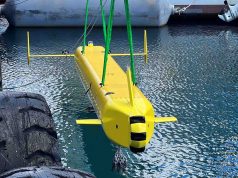The US Defense Advanced Research Projects Agency (DARPA) has selected 11 teams for Phase 1 of the Space-Based Adaptive Communications Node program, known as Space-BACN.
Space-BACN aims to create a low-cost, reconfigurable optical communications terminal that adapts to most optical intersatellite link standards, translating between diverse satellite constellations.
Space-BACN would create an “internet” of low-Earth orbit (LEO) satellites, enabling communication between military/government and commercial/civil satellite constellations that currently are unable to talk with each other.
The agency selected teams from academia and large and small commercial companies, including multiple performers awarded first-time contracts with the Department of Defense.
“We intentionally made making a proposal to our Space-BACN solicitations as easy as possible, because we wanted to tap into both established defense companies and the large pool of innovative small tech companies, many of which don’t have the time or resources to figure out complicated government contracting processes,” said Greg Kuperman, Space-BACN program manager in DARPA’s Strategic Technology Office. “We used other transactions and were very pleased with diversity of organizations that responded and quality of proposals. After a successful Phase 0 where we got to see the teams sprint to put together an initial architecture design for Space-BACN, I’m excited to get to work in Phase 1 building the actual system.”
In the first technical area, CACI, Inc., MBRYONICS, and Mynaric will work on developing a flexible, low size, weight, power and cost (SWaP-C) optical aperture that couples into single-mode fiber.
II-VI Aerospace and Defense, Arizona State University, and Intel Federal will work on a reconfigurable optical modem that supports up to 100 Gbps on a single wavelength
The two teams of performers will also participate in a collaborative working group to define the interface between their respective system components.
In a third technical area, the agency selected five teams to identify critical command and control elements required to support cross-constellation optical intersatellite link communications and develop the schema necessary to interface between Space-BACN and commercial partner constellations. These companies include SpaceX, Telesat, SpaceLink, Viasat, and Kuiper Government Solutions (KGS) LLC, an Amazon subsidiary.
Phase 1 of Space- BACN spans 14 months and will conclude with a preliminary design review for the first two technical areas, as well as a fully defined interface between system components. The third technical area will develop the schema for cross-constellation command and control, and will conduct a connectivity demo in a simulated environment to test the schema for a baseline scenario.
At the completion of Phase 1, selected performers in the first two technical areas will participate in an 18-month Phase 2 to develop engineering design units of the optical terminal components, while performers in the third technical area will continue to evolve the schema to function in more challenging and dynamic scenarios.



























